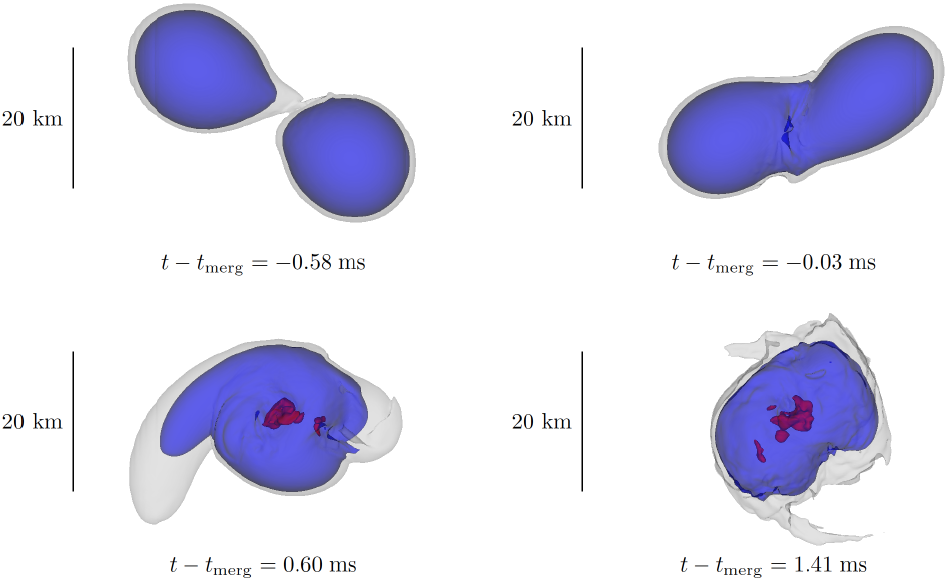Signatures of deconfined quark phases in binary neutron star mergers
In a recent study (2106.07885), we investigate the phenomenon of Quantum Chromodynamic (QCD) phase transitions to deconfined quark matter in the context of binary neutron star mergers. We compute gravitational wave imprints of such a phase transition occuring near the core of a binary neutron star merger remnant and find that the appearance of deconfined quarks makes the remnant more compact and hence more susceptible towards collapsing to a black hole. We also calculate electromagnetic signatures of these QCD Phase transitions in terms of early-time (few days to weeks following the merger) kilonovae where we find merger remnants with deconfined quarks to be dimmer in comparison to their exclusive hadronic counterparts. On the contrary, calculations of sychrotron kilonovae afterglows seem to susuggest that quark remnants are brighter in X-rays and radio waves at late times (several months to years) following the merger.
In the visualization, the deconfined quark material appearing during the post-merger evolution is represented in red.
Read more
